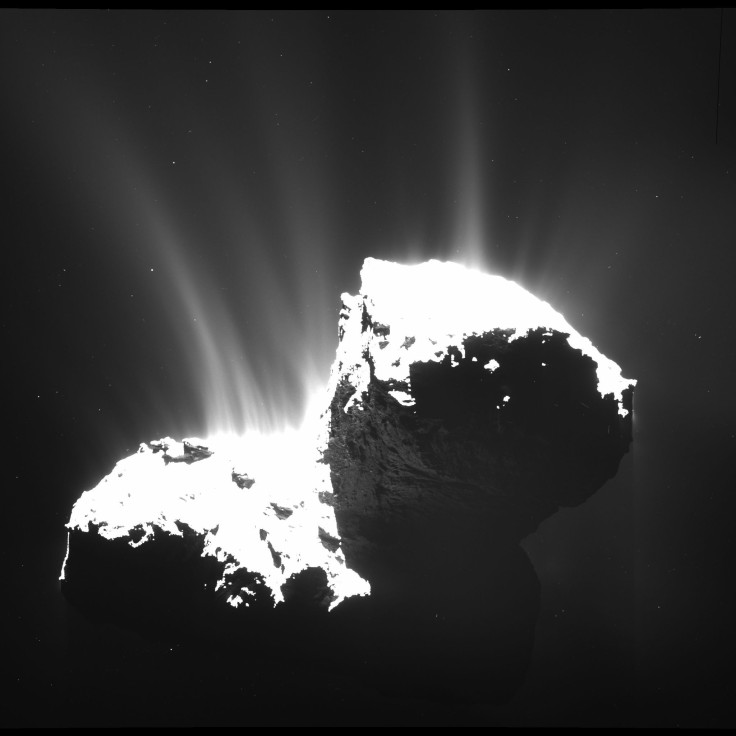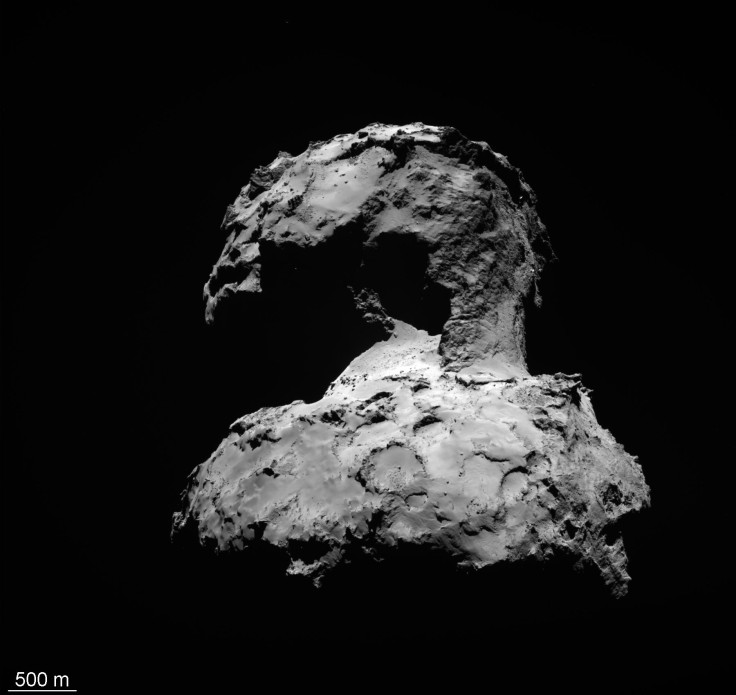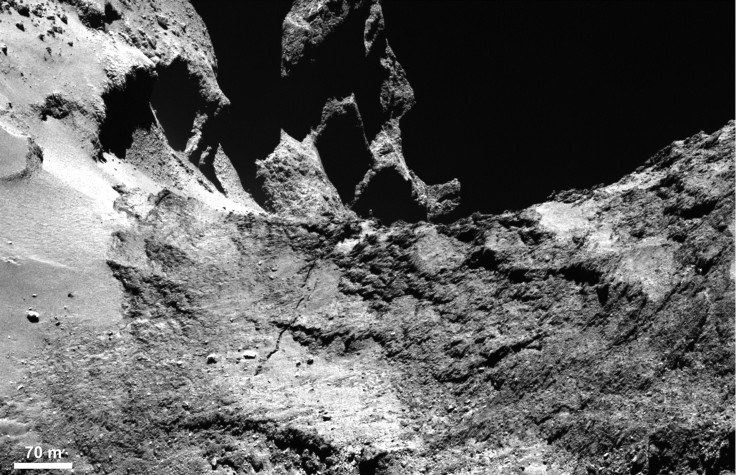Rosetta Probe Images Of Comet 67P/Churyumov-Gerasimenko Lead To Speculation Comet May Break Apart [Photos]

The European Space Agency has released its first research findings, and a tranche of new photographs of Comet 67P/Churyumov-Gerasimenko, which the Rosetta probe has been photographing since its Philae lander was lost on the surface of the comet last year.
New images show rock formations, dubbed “goosebumps,” which researchers have speculated could be the building blocks of the comet, a theory that, if confirmed, would be a significant discovery. The images were taken between August and November, between when Rosetta arrived at the comet and Philae landed.
"We still have to model this, but I think they really could be pointing back in time to the early days of the Solar System -- to the formation of the building blocks of cometary nuclei," said imaging team leader Holger Sierks from the Max-Planck-Institute for Solar System Research in Göttingen, Germany.

"Our thinking is that accreting gas and dust would have formed little 'pebbles' at first that grew and grew until they got up to the size of these goosebumps. … Eventually, they'd have found a region of instability and clumped together to form the nucleus," he told BBC News.
The comet's shape has been likened to that of a rubber duck: with one larger "body" area of the object joined to a smaller 'head' section by a narrow "neck."
The new images show a crack developing in the "neck" section of the comet, a crack up to a meter wide in some areas, leading scientists to speculate that the comet may one day break apart.

“We wondered what could create the crack, and we think it’s mechanical stress caused by the comet flexing,” said Holger Sierks, the lead scientist on Rosetta's Osiris camera told the Guardian. It is unclear how far the crack reaches, but researchers hope to have a better idea in May when the sun illuminates parts of the comet that are currently in the shade.
Despite the failure of the Philae lander, scientists have already made some noteworthy discoveries from their close observation of the comet, including that the chemical signature of the comet’s water is nothing like Earth's, contradicting the theory that crashing comets supplied our planet with water, according to Wired.
A range of papers based on the research done on the comet so far have appeared in a special edition of the journal Science, published this week.
© Copyright IBTimes 2024. All rights reserved.






















